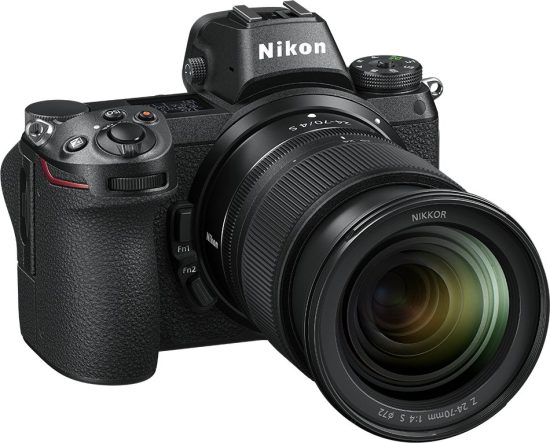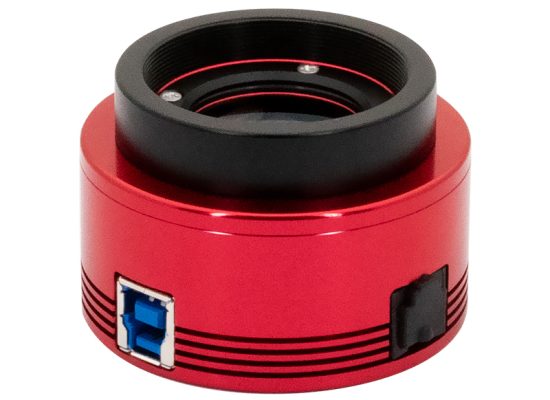6 Best Cameras for Astrophotography [2024]

People often ask me what the best camera for astrophotography is. And, to be fully honest, the answer is easier than many people think: there’s no such thing as the best camera for astrophotography.
Just as there is no best telescope, there is no best camera. Pretty much any camera can be used to photograph the night sky, but some will have greater limitations than others.

Even some smartphones can produce decent images of the Milky Way if you photograph from a place far from light pollution. And let’s remember that the camera is not everything.
If you want to produce beautiful astrophotos, you also need lenses, a tripod, clear skies, some knowledge of astronomy, etc.
That being said, the camera is indeed one of the most critical components of an astrophotographer’s toolkit.
With so many options available in the market, choosing a camera for astrophotography can be a daunting task.
First, let’s explore the features to look for when choosing a camera for astrophotography.
Sensor size
The first consideration when choosing a camera for astrophotography is the sensor size. A larger sensor can capture more light, resulting in less noise and greater dynamic range.

Full-frame sensors are ideal for astrophotography, but they tend to be more expensive than cropped sensors. However, cropped sensors can still produce excellent results, especially when coupled with fast lenses.
Read more: The Difference Between Full Frame & Crop Sensors
ISO performance
Another important factor to consider is the camera’s ISO performance.
ISO measures the camera’s sensitivity to light, and a higher ISO allows for faster shutter speeds in low-light conditions.

However, high ISOs can also introduce noise into the image.
Look for a camera that has good ISO performance at high settings so you can capture sharp and clear images of the night sky without introducing too much noise.
Read more: How to MASSIVELY Reduce the Noise in Your Star Photos
Live View and Focusing
Most modern cameras come with live view, which allows you to see a preview of the image on the camera’s LCD screen.
This is an essential feature for astrophotography, as it allows you to accurately focus on the stars.
Look for a camera with a high-quality live view so you can easily see the stars and adjust focus as needed.

I doubt any of the new cameras come without live view, but if you’re looking at the second-hand market, be sure to choose a camera that has live view; it will save you a lot of time.
Read more: How to Get Sharp and In Focus Stars in Starscape Photos
Astro-modified or not
Digital sensors are very sensitive to infrared light, and that’s why camera producers fit them with a filter in front that eliminates infrared light so they can be used for day-to-day photography.
But that filter also cuts out some wavelengths that are very useful for astrophotography, like the wavelength of Hydrogen-alpha emitted by most nebulae in the sky.
In an off-the-shelf camera, the red in such nebulae will be washed out, and very long exposure times will be needed to show their true beauty.
Astro-modded cameras will be much more sensitive to that specific part of the spectrum.

A modified camera is unnecessary for landscape astrophotography; they’re more useful in deep-sky astrophotography.
But, if you can afford the modification or an already modded camera, I think it’s a good idea to get one.
Even in wide-angle photos, red emission nebulae will be more prominent, and the sky will look even more interesting.
Just be aware that it might be a bit trickier to use a modified camera for your travel photos; you’ll have to adjust the white balance quite often.
Other features
Besides the aforementioned features, there are a few more things to check when getting a new camera for astrophotography.
An articulated screen is a great idea as it will make your framing easier when photographing subjects overhead.

The number of megapixels is not important at all in astrophotography. Actually, having lots of pixels crammed on a sensor will generate a noisier image than a smaller amount of pixels spread across the same area.
Also, you don’t need image stabilisation; it’s totally useless in astrophotography.
It really doesn’t matter if you’re using a DSLR or a mirrorless; they offer matching performance.
However, as DSLRs are at the end of their era, looking at a mirrorless camera is probably wiser if you want to do some serious astrophotography in the long term.
Read more: Mirrorless vs DSLR Cameras for Nature Photography
Best cameras for astrophotography
After going through some features of a camera suitable for astrophotography, let’s now look at some actual camera models that I believe are a great choice for any astrophotographer.
1. Canon EOS Ra
The Canon EOS Ra is a specialized version of the Canon EOS R designed specifically for astrophotography.
At this moment, it is the only off-the-shelf camera that comes modified for astrophotography.
It has a 30.3-megapixel full-frame sensor, providing excellent image quality and low-light performance.

The camera also has a fast burst rate of 8 frames per second, making it ideal for capturing transits of the International Space Station over the Sun or the Moon, or certain phases of total solar eclipses.
One of the most significant advantages of the Canon EOS Ra for astrophotography is its specialized infrared-cutting filter.
This filter allows the camera to capture more accurate and detailed images of nebulae and other celestial objects that emit light in the hydrogen-alpha wavelength.
Read more: How to Photograph the International Space Station
2. Canon EOS R6
If you want a Canon mirrorless that is not Astro-modified and so easier to use for day-to-day photography, the R6 is a great choice.

It has an ISO invariant sensor, which makes it a great camera in low light. Its autofocus system also works well in low light, and sometimes you don’t even need to bother with manual focus, even for astrophotography.
It suffers from a bit of amp glow, but that will mostly impact deep-sky photography.
3. Canon EOS 6D
You read that right: Canon EOS 6D. The Mark I, not the Mark II. A camera designed over a decade ago is still a very good camera for nightscapes, especially if astro-modded.

It has a very decent noise level and can be found at great prices on the used camera market.
I believe it’s the best choice if you’re on a budget and want beautiful results straight away. Pair it with a Sigma 24mm f/1.4 Art lens, and you’re good to go.
[insert 6d.jpg]4. Nikon Z6
If you’re a Nikon fan, from today’s Nikon camera lineup, the Z6 is probably the best-suited for astrophotography. It offers superb performance at high ISO.

The Z6 II is also a great choice, but if you only need it for astrophotography, the price difference is not justified.
The Z6 is definitely one of the best nightscape cameras available on the market today.
5. Sony a7S III
The Sony a7S III is a high-end mirrorless camera known for its impressive low-light performance and advanced features.
It has a 12.1-megapixel full-frame sensor designed for low-light shooting and provides excellent image quality with minimal noise.
You might think that 12.1 MP is too low, but I assure you that it’s more than enough for most applications.

Even though, for whatever reason, I’ve never gotten along with Sony cameras, I have to admit that the a7S III’s high ISO performance is impressive.
The dynamic range is also fantastic, allowing for great results when shooting landscape astrophotography.
Its wonderful performance at high ISOs makes it a great camera for shooting aurorae, as you might need short exposure times if the aurora is super active and moves very fast.
It’s also great for shooting real-time videos of the aurora using a fast lens.
6. ZWO ASI1600MC Pro
The ZWO ASI1600MC Pro is not a traditional camera but rather a dedicated astrophotography camera. Even though it can be connected to normal camera lenses, it was designed to be attached to a telescope.
It’s a monochrome camera, meaning that if you want to capture color images, you need specialized red, green, and blue filters.
You can also use the camera for narrowband work, shooting only in the wavelength of Oxygen III and Hydrogen-alpha, for example.

Such cameras are maybe better suited to the more advanced astrophotographer as the learning curve is a bit steeper.
They also need more equipment in the field, thus not being the best choice for astrophotographers that want to be super mobile. But if you are into deep-sky astrophotography, consider having a look at all cameras offered by ZWO.
ZWO also produces speciality cameras dedicated to Solar System photographers. In this field, usual photo cameras are almost useless, and you need cameras dedicated to this kind of work.

A great planetary camera is the ZWO ASI294MM. Also a monochrome camera, it produces superb images of the planets or the Moon coupled with the right telescope.
Read more: 5 Targets for Beginner Deep Sky Photographers
In conclusion
Choosing the best camera for astrophotography depends on your personal preferences and budget.
Full-frame cameras typically offer better low-light performance and image quality, while crop-sensor cameras are more affordable and compact.
Dedicated astrophotography cameras like the ZWO ASI1600MC Pro offer specialised features that are not found in traditional cameras.
Whichever camera you choose, make sure you also have a wide aperture lens, a sturdy tripod, and a remote shutter release to maximise your astrophotography experience.
Clear skies!





